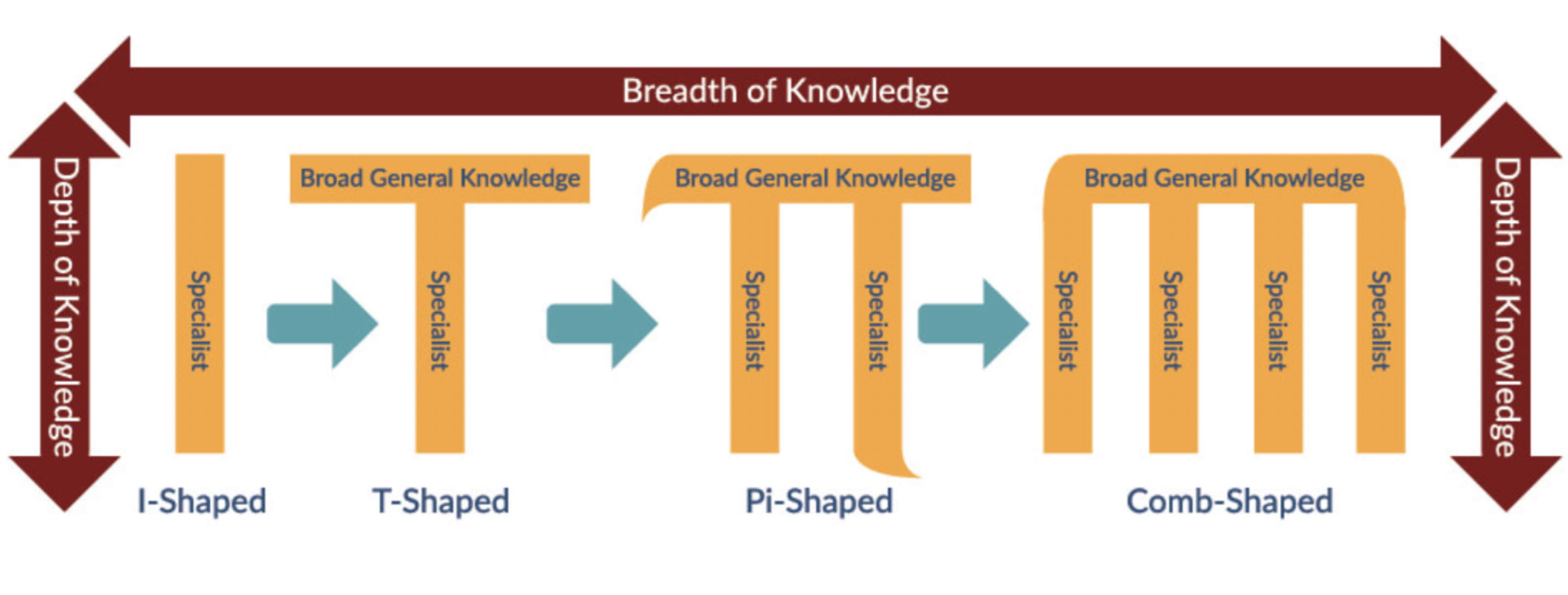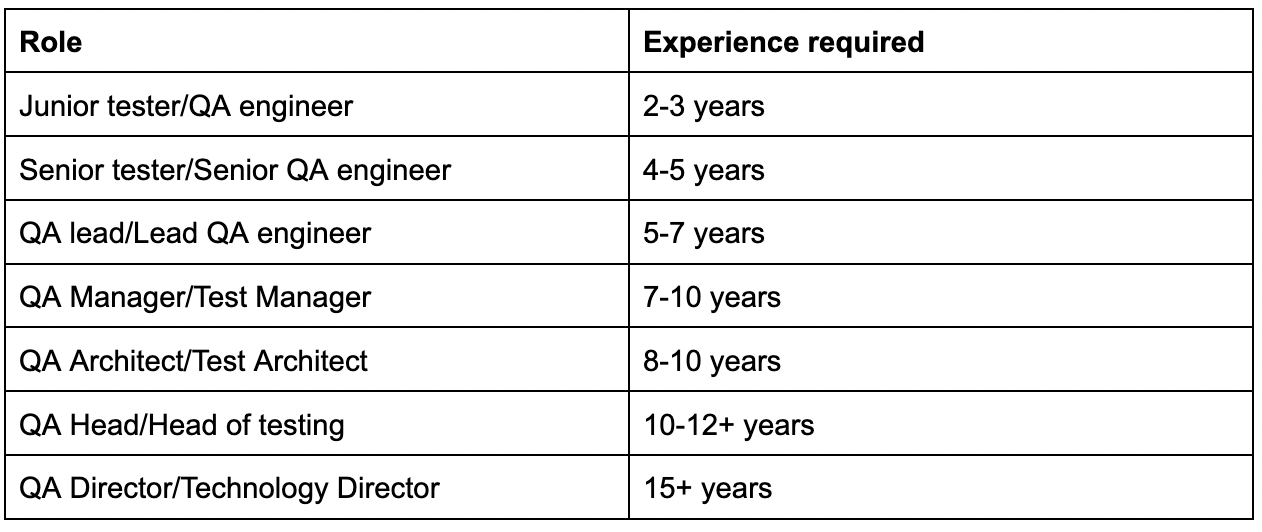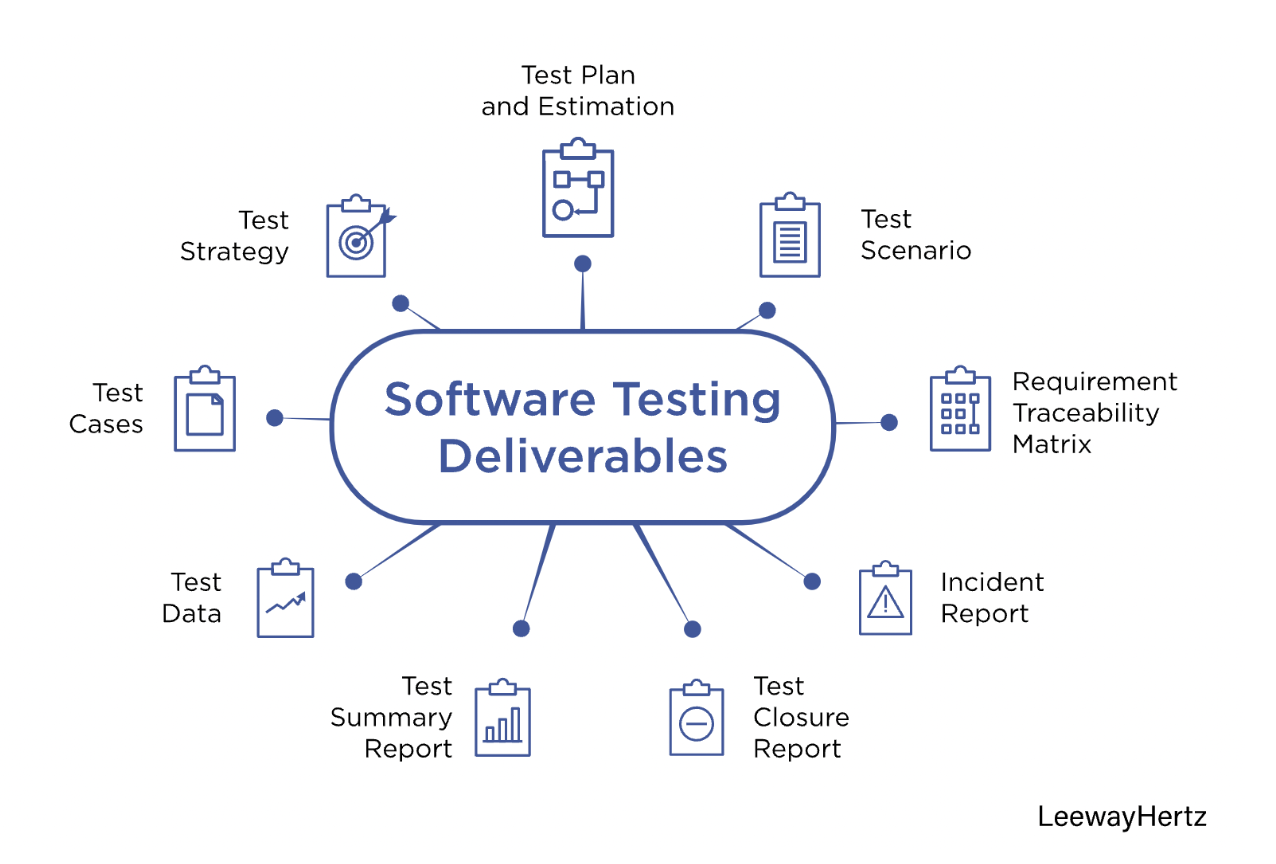You have 1 article left to read this month before you need to register a free LeadDev.com account.
Starting out in the tester field and wondering how to map out your career path? Laveena Ramchandani may be able to help you figure out the differences in responsibilities according to titles.
The role of a tester can have varied meanings and responsibilities. Often, this variation comes down to the organization and, in some cases, a differentiation in title. But, overall, the role of a tester remains the same.
As a tester, it is vital to understand your core responsibilities so you are also able to stretch yourself into other areas and become more of a “T” comb-shaped tester (Figure 1.). This is what many employers look for.

Once you have a strong base of what a software tester really does, it becomes easier to see where your interests lie in terms of testing. Remember, whichever route you take, your testing suitcase of skills will always help you along the way.
Something I like to always suggest, regardless of experience level, is to reach out to the testing community. When I was first learning about my role, I did not have much to explore. However, today there are loads of groups that are readily available over social media. The wider tester community can be a useful source of information regarding:
- General testing/software development queries
- Webinars that are taking place soon and that might help your current role
- Panel sessions with community leads who are discussing current issues
- Help with your CV
- Finding someone to review your abstract for a specific conference
- Identifying which conferences are looking for submissions
A rough career timeline for a software tester
The below table provides a rough estimation of the years of experience a specific role could require.

The table is only a general outline of the way your career should flow. If you do become a senior testing member sooner than five years, then kudos to you and your hard work. However, for those who are not clear about what their career trajectory looks like, I’d suggest using the table above as a guide.
Keep in mind that when we are looking for roles there is so much more to consider than just a fancy title (job spec, interview styles, the information from the interviews, etc.,).

The test manager role
A manager’s role may seem super exciting. It was always a significant goal of mine to reach a managerial position; and little did I know I would ascend to this role, overseeing huge teams, within eight years of my testing experience.
But not all managers take eight years. Some might become managers slightly earlier or slightly later. Others may not want to be managers at all, as it might not fit their particular career focus. So, what does being a manager entail, and is it the right fit for you?
A test manager’s responsibilities
I am currently a test manager. The role is an interesting one and provides an opportunity to do a great mix of tasks on a day-to-day basis.
For instance, I’m required to be involved in various stakeholder meetings, showcasing the value of the testing we perform, making improvements, driving quality engineering, and also working on strategizing how we want to work as a team.
Generally, a manager works towards enhancing the way the team tests, taking responsibility for the outcome of it too. In addition to these practical elements, managers are also responsible for hiring the right people into their teams, upskilling them, and supporting their careers.
When new projects are on the horizon, a test manager gets involved in the early stages to understand what sort of efforts, resourcing, time management, cost estimations, and strategy is required. Throughout it all, a test manager will also keep track of the team’s overall performance, alongside the individual performance of members. The costs of providing services to other teams as well as budgeting training and any other incurred costs for supplier lead teams.
What’s in a name? Test manager vs senior test manager
You may find that there isn’t much difference in the responsibilities associated with different titles. For instance, a test manager and a senior test manager could have very similar requirements.
The only large distinction here would be the fact that senior test managers have a few additional obligations to report up to a “head” or “director” level. A senior test manager may also need to acquire great interpersonal skills and be a proactive member of the team. In these cases, it would be the test manager who then reports to a senior test manager. Some companies will have this role, some may not.
Test architect role
A test architect is someone who works towards an overall automation strategy, making sure the right tools and technologies have been selected to deliver the desired results. An architect investigates a system in depth trying to understand how the smallest elements of it work, end-to-end. They also consider what the system may impact when it comes to neighboring applications, as well as impacts on upstream and downstream teams.
In this role, you need to proactively seek to bring issues and risks to light so that managers and senior managers know where to direct their attention. Additionally, you should provide your teams with the right type of solution, perhaps a proof of concept alongside it.
Architects may also help with the upkeep and creation of well-designed system architectures and complex cases. In other words, an architect within software testing helps optimize the testing processes and practices.
Head of test
The head of QA role can either be a hands-on technical or more of the strategy and practice refinement role. It can even be a good mix of both.
Unlike other aforementioned positions, where there can be a variety of managers, architects, leads, and testers, there is only one person who may wear the “head of QA” hat.
The main goal of this role is to ensure product quality, alongside overseeing the delivery/maintenance of automated frameworks and manual frameworks based on industry best practices. The role requires a strategic mindset and planning to help drive the entire development. Those in this position must have a strong sense of ownership and desire for quality baked in from the very start – the “shift-left” ideology is also very important.
Many firms have a jump from a QA manager role to a head of QA role. Therefore, it’s vital to have proven records of building and working alongside QA teams, supplier experience, managing a specific function(s), working on strategies, and driving a QA team in the right direction with the right skills.
Remember that in this position you’re an equal guiding force for the teams’ projects as you are for the members’ personal upskilling and development. Your door should be open to all team members, at all times, because their opinions count and they may need the right direction from you.
The head of QA will ensure quality criteria and value is met via all the testing artifacts as well as their own QA environments, helping to drive a strategy for that too. It would be prudent for these folks to also work alongside teams to define continuous improvements and/or things like driving DevOps to have the correct platforms and frameworks in place. This goes hand-in-hand with the wider collaboration required of a head of QA role, that being: constant communication with QA managers, architects, senior managers, and technology managers.
Director of QA
This role does not exist in many firms, however, it can be equated to the addition of “VP” to a title. Again, a director should have knowledge of strategizing QA projects, incorporating costs for team budgets, skills, and extras. The director of QA will always be in communication with senior technology managers, other directors from different areas, and CTOs.
Main takeaways
Starting out in this field may seem daunting, and you may have many questions about how fast you want to ascend the career ladder or what that may mean for your remit.
If you’re mobilizing upwards and are confused about the responsibilities associated with your upgraded title, speak to a mentor about your ambitions and see if you can reach an understanding at the end of the conversation. Don’t sweat the small stuff; if you’re still not on board with your new title, remember that it’s just that.
Many roles also come with asks around certifications, however, in these positions nowadays, one can learn so much more in their role through sheer experience. Certification is good to have, but what you learn on the job is much more useful.
Finally, despite the job titles that you’ve learned about throughout this article, remember that it’s ultimately the job satisfaction, project satisfaction, and company atmosphere that really make your day-to-day worthwhile. At the end of the day, it’s your career and only you will know what’s right for you and what isn’t.


